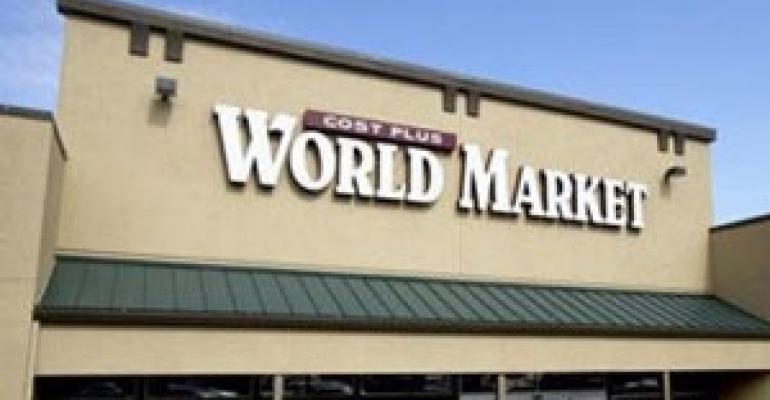Few people had seen it coming, but Bed Bath & Beyond’s decision to acquire Cost Plus Inc. might prove a boon for both the retailers involved and the retail real estate industry.

On May 9, the Union, N.J.-based Bed Bath & Beyond Inc. announced it entered a definitive agreement to buy Cost Plus Inc., an Oakland, Calif.-based retail chain, for $22 per share or approximately $520 million in an all-cash transaction. Cost Plus, which operates under Cost Plus and World Market brands, carries a wide selection of home furnishings, accessories, gifts and nonperishable food procured from around the world and competes against such retailers as Pier 1, Crate & Barrel and Pottery Barn. It operates 259 stores located throughout 30 states.
The retailer might not be an obvious acquisition choice for Bed Bath & Beyond, which focuses on basic home furnishings and appliances and already operates 965 stores in the U.S., but it should help the company diversify into new merchandise categories at a time when the housing market remains weak, says Doug Stephens, president of Retail Prophet, a specialty consulting firm. Bed Bath & Beyond reported that its same-store sales rose 5.9 percent during fiscal 2011, but opportunity for growth in its core business is still limited, according to Stephens.
“Despite risks associated with a relatively lackluster record of profitability at Cost Plus, we think Bed Bath’s culture and operating model will have a net positive impact on the Cost Plus and World Market businesses over the long run,” wrote Morningstar analyst Peter Wahlstrom in a note. “For the Bed Bath concept, which is already (arguably) approaching saturation in the domestic market at nearly 1,000 sites, the home furnishings bolt-on represents another leg of growth.”
Cost Plus Inc. reported same-store sales growth of 5.4 percent in fiscal 2011. Approximately 39 percent of its sales last year came from consumables, including spices, gourmet meats and cheeses, candy and chocolates, cookies and cakes and coffee and tea. Cost Plus’ expertise and connections with vendors in the gourmet foods sector could help Bed Bath & Beyond add a new department to its stores. This would be similar to the strategy Bed Bath & Beyond employed when it acquired Harmon Stores Inc. in 2002 and added shelves of health and beauty products to its merchandise selection, notes Howard Davidowitz, chairman of Davidowitz & Associates Inc., a New York City-based retail consulting and investment banking firm.
“One way to increase comp sales is to add new business,” says Davidowitz. “I believe Bed Bath will be able to integrate the specialty foods into their stores and I think the departments would fit because Bed Bath and Cost Plus customers come from the same psychographic and demographic.”
In addition, Cost Plus’ international bazaar retailing model is less susceptible to competition from Amazon.com and other online retailers than Bed Bath & Beyond’s more mainstream products, adds Bob Phibbs, the Retail Doctor, a Coxsackie, N.Y.-based business strategist and retail consultant. Cost Plus does carry home furnishings and accessories, but it sells niche products that can’t be found elsewhere.
Closed for Business?
In the short-term, the acquisition could still spell trouble for retail landlords, as Bed Bath & Beyond will likely close at least a few of the Cost Plus stores. Most likely these will be underperforming Cost Plus stores or Cost Plus stores in markets where the smaller retailer and Bed Bath are located in close proximity to each other.
“I think they would probably need for Cost Plus to become boutiques in some of the Bed Bath & Beyond stores,” says Phibbs. “I don’t think you’ll see it the other way,” with Bed Bath locations closing down and Bed Bath merchandise transferred to Cost Plus stores.
Bed Bath & Beyond’s and Cost Plus’ real estate models are fairly similar. Both retailers prefer locations in or near large cities, and both lease, rather than own, most of their stores. Bed Bath stores range in size from 20,000 sq. ft. to 50,000 sq. ft. Cost Plus stores average 18,600 sq. ft.
The closures will likely come sooner rather than later, with Bed Bath & Beyond taking the opportunity to take the write-down on closed stores as part of the overall acquisition, says Davidowitz.
“They won’t close half the chain,” he notes. “I I had to guess, and this is strictly a guess, I would say maybe they will close 15 percent” of Cost Plus stores.
In the long-term, the transaction should improve the health of Cost Plus Inc. and ensure that the chain will be around for years to come, Davidowitz notes—not a certainty if Cost Plus would remain an independent chain.
Bed Bath could potentially even grow Cost Plus. When the company acquired Harmon, the smaller retailer operated 27 stores in three states. Today, Harmon operates 45 stores.

